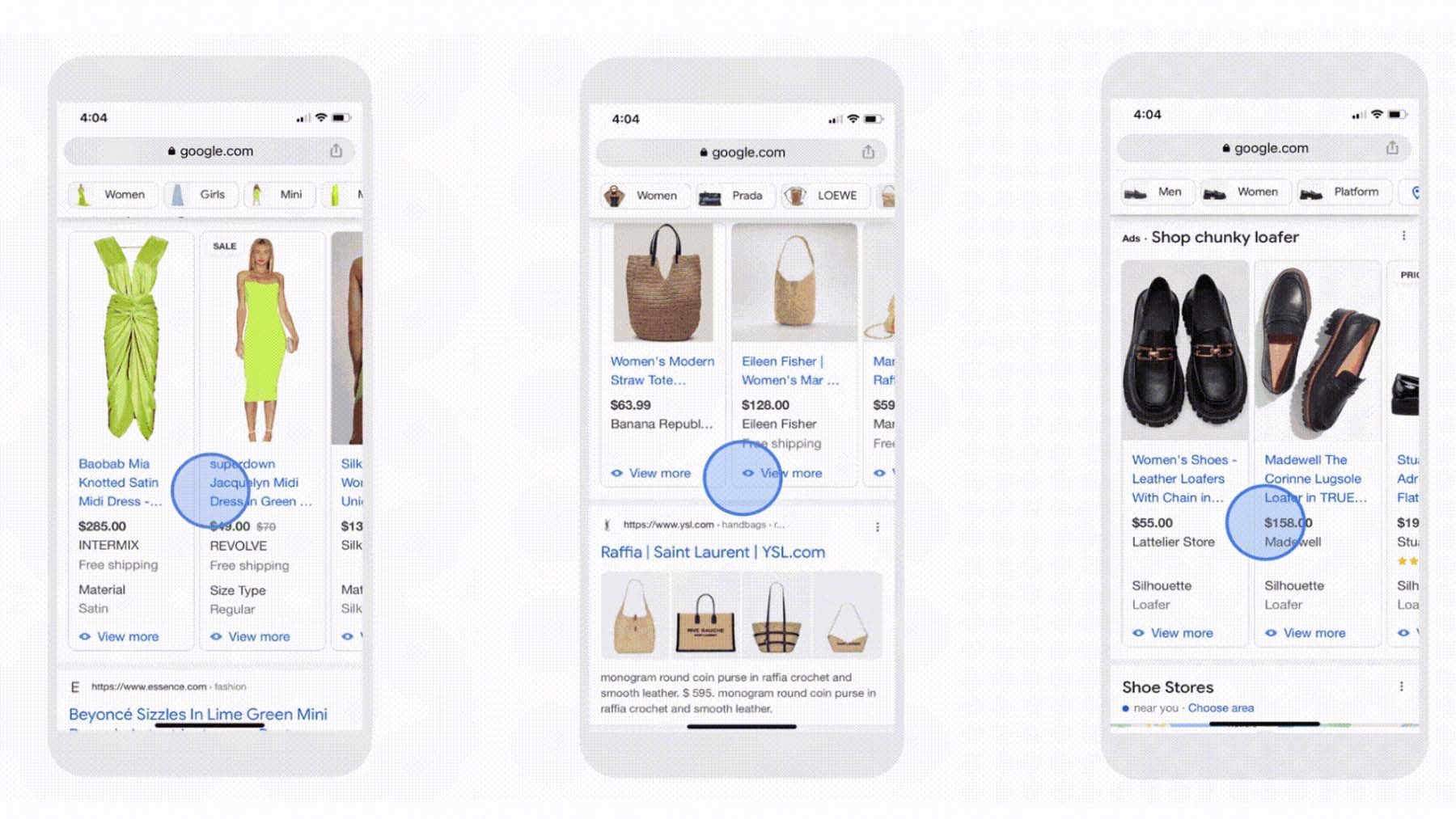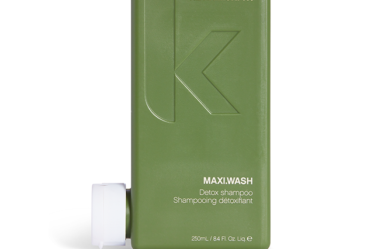
After a failed product search online — where a shopper is delivered items that aren’t relevant, don’t include what they’re looking for or are told a product doesn’t exist even though a retailer carries it — fashion brands have an average of just eight minutes to deliver what the shopper is looking for before they give up. At stake is more than just that one purchase: poor search results send shoppers to competitors’ websites, potentially create a negative association with a brand and make it less likely for consumers to return in the future.
Those are the findings of a Google survey meant to convince brands and retailers of the importance of creating the best possible online shopping experience — using Google search and shopping tools. The latest is the Google Retail Search tool, which allows brands to integrate Google search on their own websites.
Brands are buying Google’s pitch. Long a central player in both e-commerce and marketing, lately, Google’s outsized role in the space has grown even larger. In the face of privacy changes and new regulations that make tracking how consumers are behaving online more difficult, brands are looking for surer bets in the digital advertising space, which has benefited Google.
Return on ad spend is decreasing across platforms, even as prices increase — cost per thousand visitors who see an ad, known as CPMs, on Google for fashion companies rose 148 percent from March 2021 to March 2022, according to the marketing firm Varos. But despite those rising costs, it‘s a better bet than other platforms: return on ad spend decreased 8 percent on Google over the same period compared to a decline of 41 percent on Facebook. As such, fashion brands are increasing their ad spend with Google more than other digital ad players. Varos data shows fashion brands are spending 114 percent more on Google from 2021 to 2022 year-to-date compared to a 72 percent increase in spend on Facebook.
Developing a Google-centric marketing strategy goes beyond ad placement or optimising content for search. Best known for its search engine, the tech giant has also bolstered its shopping capabilities, allowing for better comparison shopping and discovery, according to Google executives. Google has become “the strongest and safest part of the marketing funnel,” according to a recent note from equity research firm MoffettNathanson.
Search’s Big Moment
Brands and retailers can tap the power of search in two ways: through external search engines and search tools on their own sites. Google has moved into latter with the launch on Mar. 30 of Google Retail Search, a new tool that allows brands to use Google’s search technology on their own channels, using Google AI and machine learning combined with a retailer’s product catalogue to deliver search results on its own website.
Retailers’ own search tools have a reputation for being clunky, delivering irrelevant results or failing to understand a search altogether. The tool is meant to reduce the $300 billion loss retailers suffer from search abandonment in the US alone, according to Google.
“It sounds like a simple problem to solve, but it’s been extremely difficult for retailers’ e-commerce sites to understand a shopper’s intent and natural language in a search query, map that to imperfect catalogue data and then deliver the most relevant results,” said Carrie Tharpe, Google Cloud vice president of retail and consumer.
With this tool, shoppers should get strong results even with long, complicated searches, like “long black dress with short sleeves and comfortable fit,” without having to refine or shorten their search. The technology works on a retailer or brand’s website on desktop, mobile as well as on its app. It allows retailers or brands using it to retain the data from customer searches and takes an average of three months to integrate into a brand or retailer’s e-commerce site and app. (The integration time is required to fully import a product catalogue, allow for machine learning and test before delivering best results.)
“It sounds like a simple problem to solve, but it’s been extremely difficult for retailers’ e-commerce sites to understand a shopper’s intent and natural language in a search query”
Macy’s is among the first fashion retailers to use Google Retail Search on its own website and has so far seen a 2 percent increase in conversion (demonstrating customer engagement and search improvement) and 1.3 percent increase in revenue per visit.
While the new retailer search tool is helpful in driving results on their owned e-commerce channel, search has also grown in importance more broadly. Paid advertising and an obsession with single purchase conversion made up much of the collective conversation around digital advertising over the last decade. But paid ads are less effective than they once were, particularly as the changes to privacy regulation evolve and platforms including Google phase out tracking tools like third-party cookies, search has taken on new importance.
“It’s the first time in five to 10 years that people are talking about organic, good written content and PR … the things your audience will relate to and get you at the top of search results,” said Chris Donnelly, founder of Verb, a luxury digital marketing agency. “The whole game has changed.”
As of February 2022, Google accounted for more than 90 percent of the search engine market, followed by Microsoft’s Bing, Yahoo and Baidu in China. (It’s worth noting that on lesser-known search engines like Bing, “traffic might not be at the same volume as Google, but the quality of that traffic is very good,” Ed Foster, GroupM vice president and managing partner of search and social, told BoF last year.) Given Google’s outsized market share, however, the platform has the most data to feed its AI engine, creating a better experience for shoppers who are then more likely to purchase based on better results.
Because of this, it’s all the more important for brands to adopt best practices to appear high in search results. That means making sure a brand’s website is rich in the right keywords, creating category or topic pages to organise content on the brand’s site (versus posts that are published but not organised with any kind of taxonomy) and securing press coverage from quality editorial sources that mention a brand or link back to the brand, Donnelly said. Displaying high-quality content — both imagery and text — on a brand or retailer’s website is also important, as Google recognises these things as being more appealing to consumers.
For example, Donnelly’s firm Verb worked with Net-a-Porter last year to help them improve the copy and content on their watches page. Verb then seeded the content with magazines and journalists. The result, Donnelly said, was a significant increase in traffic and sales.
A Suite of Shopping Tools
In addition to the changes to Google’s search tools, the tech giant has also beefed up its shopping tools in the last two years.
Brands can now appear in the Google shopping tab through either organic results or paid ads (previously, the only way to appear in Google’s shopping tab was to pay to be included; the change, implemented in 2020, was made in order to lower the barrier to entry for smaller brands to appear on Google, said Bill Ready, Google president of commerce and payments.) Shoppers can adjust their Google Shopping search to filter for products that are in stock at a brand or retailer’s store. Google Lens, a tool that allows people to find products based on an image, is also testing a new feature in beta that combines the image search with words. Augmented reality tools also allow shoppers to try on beauty products on Google, a tool Ulta has implemented.
Google’s dominance in search hasn’t come without cost. The company has battled international regulators who have brought cases against it for alleged antitrust violations in search and shopping, particularly in Europe (Google has fought back against the suits and due to lack of enforcement, the company has not yet had to undergo structural changes to help “restore competition,” according to the New York Times.) In the US, new legislation limiting Google’s reach is unlikely to take shape, although lawsuits against Google may still crop up. And despite the legal activity, Google’s still likely to set the rules for play in both search and shopping moving forward, forcing fashion brands and retailers to play by Google’s rules, which aren’t always consistent.
“Google is always changing, but things change so dramatically in search that something we could do now could not be prioritised in six to 12 months in the search engine,” Donnelly said of the difficulties brands face due to Google’s dominance. “If you’re starting a business now or you’re a brand trying to market, you’re building on the shoulders of giants.”


